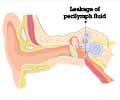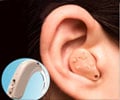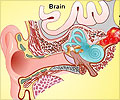How does the inner ear decode speech? Usually, the inner ear produces tiny electrical currents whenever sound enters and then converts them into electrical impulses. But how does it do it, has not been known so far?

‘This discovery might provide us with a better understanding of how the inner ear functions.’
Read More..




A collaboration between researchers in the U.S., Sweden, Denmark, the U.K., and India has now revealed how the inner ear processes speech. The discovery is an important addition to our understanding of how the inner ear and our sense of hearing function.Read More..
"The sound of speech has two components in the inner ear. One component consists of high-frequency variations in the speech sound. The other component, known as the 'envelope,' describes the outermost pattern of the speech sound", says Anders Fridberger, professor of neuroscience at Linköping University, and one of two principal authors of the article.
The envelope, which varies relatively slowly, can be considered as the overall structure of the speech signal. Researchers have previously shown that the envelope is most important for understanding what someone is saying. Until now, the way the inner ear decodes the envelope of the speech signals has remained elusive.
The inner ear produces tiny electrical currents whenever sound enters - it converts sound to electrical impulses. These are led through the auditory nerve to the brain.
By placing small electrodes into the ear canal of experimental subjects, and placing electrodes close to the cochlea of patients who have undergone surgery, the researchers have been able to record the way in which the inner ear codes speech-like sound.
Advertisement
The results have led the researchers to the understanding that speech gives rise to a particular form of electrical signals sent to the brain. These signals differ from those that arise in response to other forms of sound.
Advertisement
The discovery is an important addition to our understanding of how the inner ear functions. The inner ear is embedded in the thick bone of the skull, which makes it difficult to access and study it. Thus, diagnosing the exact location of damage to the inner ear is currently difficult.
"We believe that our results will improve diagnostic procedures for various hearing impairments, something that is sorely needed. Much remains to be done, however", says Anders Fridberger.
Source-Eurekalert















